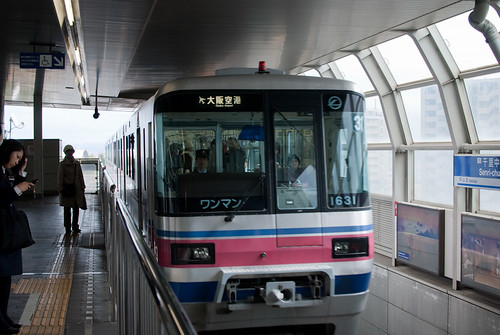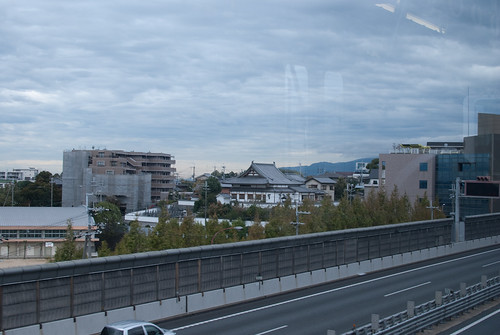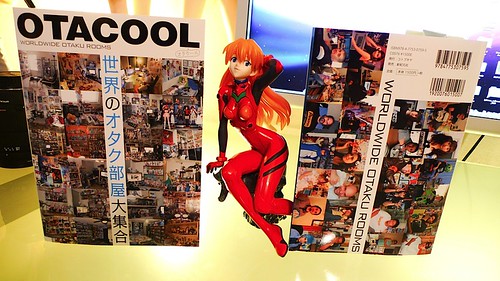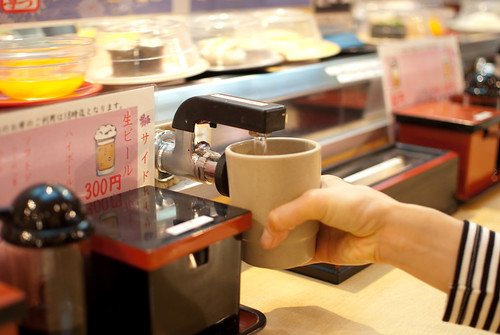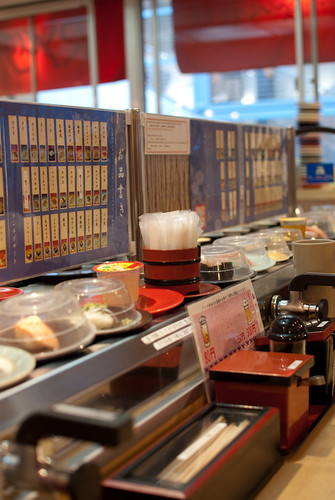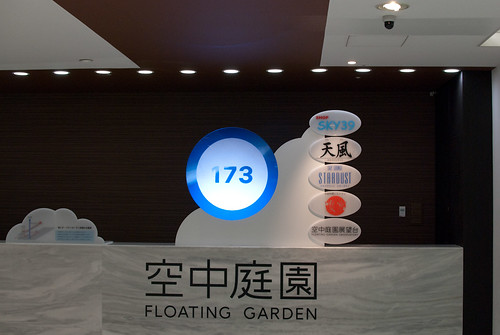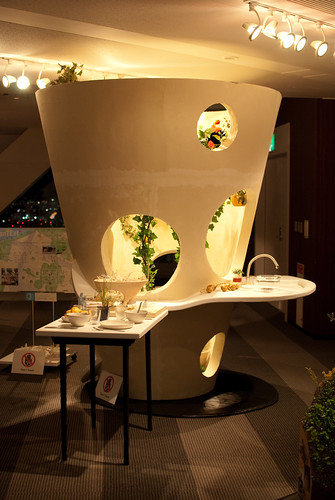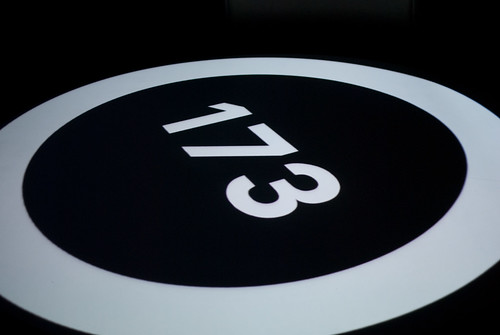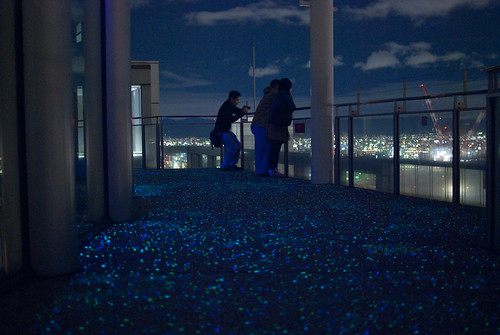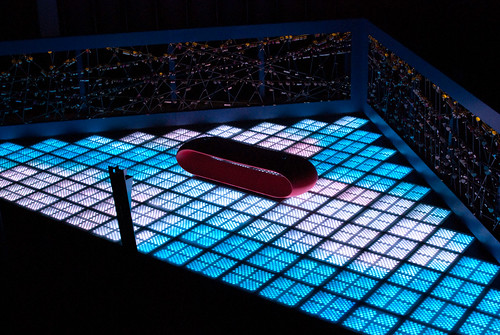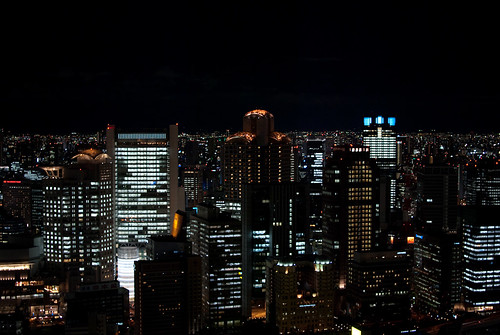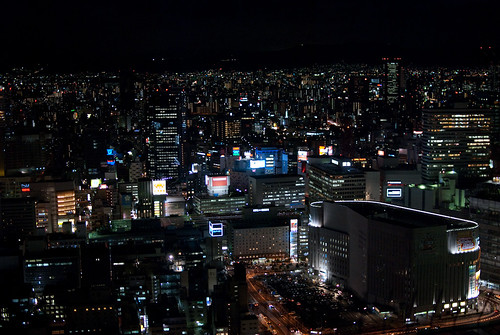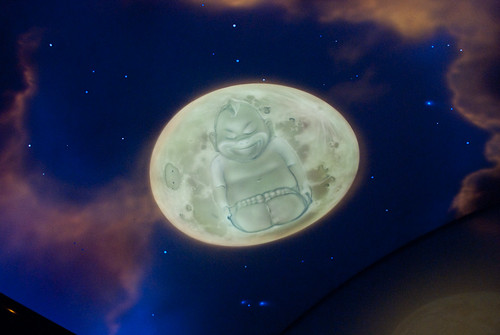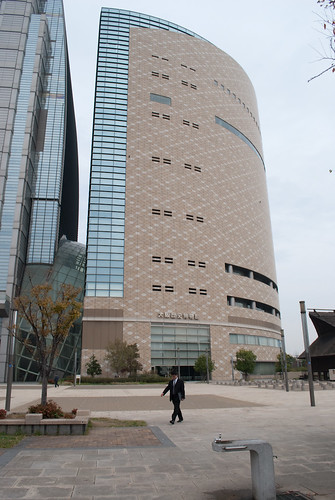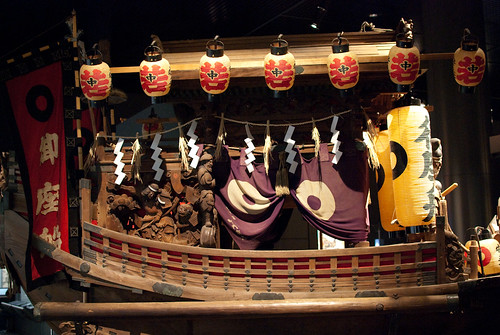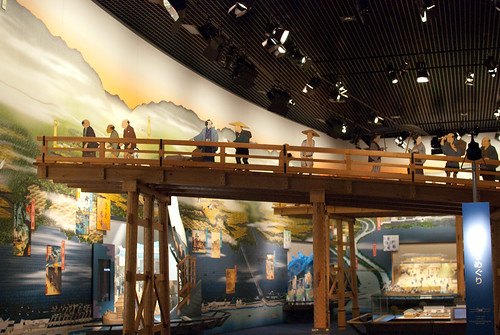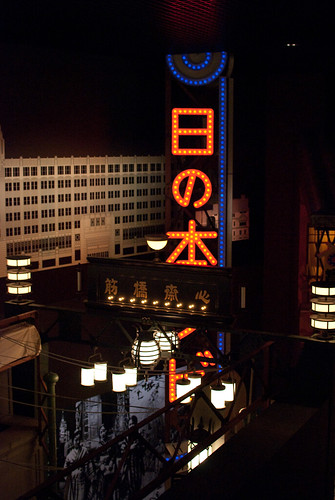We would be heading home today, but we got some last minute shopping in. Usually when we've travelled to Asia, we've typically pushed the limits of the monetary value of the products bought overseas; however on this trip, we spent so much of our time sightseeing that we didn't even come close to hitting the one person limit.
This morning we headed down to a bookstore known as Junkudo [淳久堂]. We had been in there a few days ago and there was a book that H was interested in, but didn't get it a few days ago. However, he really wanted to get his hands on it now. So we went down to the bookstore at opening time.
However, before actually getting to the store, H needed the all important breakfast to tie him over. We stopped into the Lotteria along Shinsaibashi-suji [新齋橋筋]. Lotteria is a Japanese fast food place. I had a pizza sandwich, which really all that interesting. N, however, had an English muffin with a half-boiled egg. Oh my gosh. The egg yolk was so yummy. It was much better than that dinky pizza sandwich that H had.
Junkado was all the way, way south. The store is well within the boundaries of Namba [なんば] and outside of Shinsaibashi [新齋橋]. There seemed to be a lot of tourists off the beaten path early this morning. H quickly bought his book, a JR train catalog book. What an otaku. N bought some of her Japanese manga by Takagi Naoko [高木直子]. We were pretty much in and out of there.
As we headed back north to Dotonbori [道頓堀] for more gifts and souvenirs, we also noticed that all the pachinko parlours had huge lineups. It was the middle of the day and people were lining up to gamble? It was a little unreal. Pachinko [パチンコ], for those who don't know, is a form of "gambling" in Japan that involves loud, noisy, and bright machines with silver balls that one shoots up to the top and you hope that it drops in the prize pockets. Your job as the gambler is to control the speed of these balls in such a way that you win prizes. Apparently, it's all very addictive.
After picking up some more souvenirs at the Glico store in Dotonbori, we headed back up to the Tokyu Hands department store. We also ended up at the door just before it opened. It's very interesting to watch a Japanese store open shop for the day. An employee stands at each door and they time the opening of the doors and do a very polite greeting complete with bowing to everyone who passes through. We grabbed a few things in the store and then headed back to the guesthouse.
We got all our stuff together, said our goodbyes to the Taiwanese guesthouse owner. The owner kept forgetting that we came from Canada. She thought we were flying "home" to Taiwan or Hong Kong. We walked back to the Honmachi [本町] subway station. Here came all the stairs again. We just had the most rotten luck trying to find escalators and elevators at key points to get to the train platform. We took the Midosuji [御堂筋] Line, or Red Line all the way up to Senri-chuo [千里中央] up in the northern suburbs of Osaka. There were even more stairs as we transferred from the subway to the Osaka monorail. Oh was H's back hurting now.
The ride from Senri-chuo to the airport was pretty short. It's only 5 stations long. It was our last chance for some shots of the city. The central area of Osaka was far away and was visible on the horizon. In the near field, there were things like a temple and canal that caught the camera's eye.
We got off the monorail at Itami [伊丹] airport. There are two main buildings and it seems to be that one building is for Japan Airlines (JAL) flights and the other is for All Nippon Airways (ANA) flights. At least that's what it looked like to the passing observer. There was a lot of confusion as to which counter we were supposed to check in at. The signs weren't entirely clear at one end of the building. We discovered we had lined up for the wrong counter and were redirected further down the grand hall. When we finally got to the other end, there was a more obvious sign telling us where international passengers travelling via Tokyo should check in.
After all that confusion and going through security, we still had a little time and we were quite hungry. So we had to grab some supper. We came across a little curry place inside the airport on the way to the gate. It was actually really good food. We found that surprising for airport food. We both had curry and omurice (rice wrapped in an egg omelette). It really hit the spot for a pre-flight meal.
A note about Itami airport. If you are looking for something out of the ordinary to take a photo with, then you may want to pose with this gigantic onigiri (rice ball) outside the Airdeli between the two terminal buildings.
The flight from Itami to Narita outside of Tokyo was very quick. Just a one hour up and down flight. When we arrived in Narita, we realized that our flight had been delayed at least 30 minutes. That meant we had a little more time than expected. So we wandered the Narita airport and its stores. There were lots of high end retail stores that wouldn't fit our budget. However, there was one large "superstore" that sold everything from souvenirs to gadgets and from kimonos to snacks. It seemed like everyone in the airport was in there.
Next to the store, we also took advantage of the Yahoo! Cafe Japan. We didn't have easy Internet access for the past few days, so we caught up on all our email and Facebook feeds. It had been a while since we had heard so much English. People from all over the place were in this place taking advantage of Internet access.
Pretty soon, we were at the gate for our flight back home to YVR. Lots of Canadians around now. There was one group who was talking about their exploits. Some of them were obviously big anime fans by the way they dressed. Visiting Japan for them must have been like visiting their Mecca. Across from our gate was another gate with a flight bound for Chicago. H mused about hopping onto that flight since he would be flying there the day after next. Talk about an upcoming case of major jet lag.
It's always sad to end a trip, but it's always nice to go home. So it was with a tinge of sadness that we said goodbye to Japan. Obviously, you can tell that we will be back again. Just wait until we buy our next travel book for our next destination. Until next time, thank you for "travelling" with us to Japan and Kansai.
Sapporo Cityscape
2 years ago



